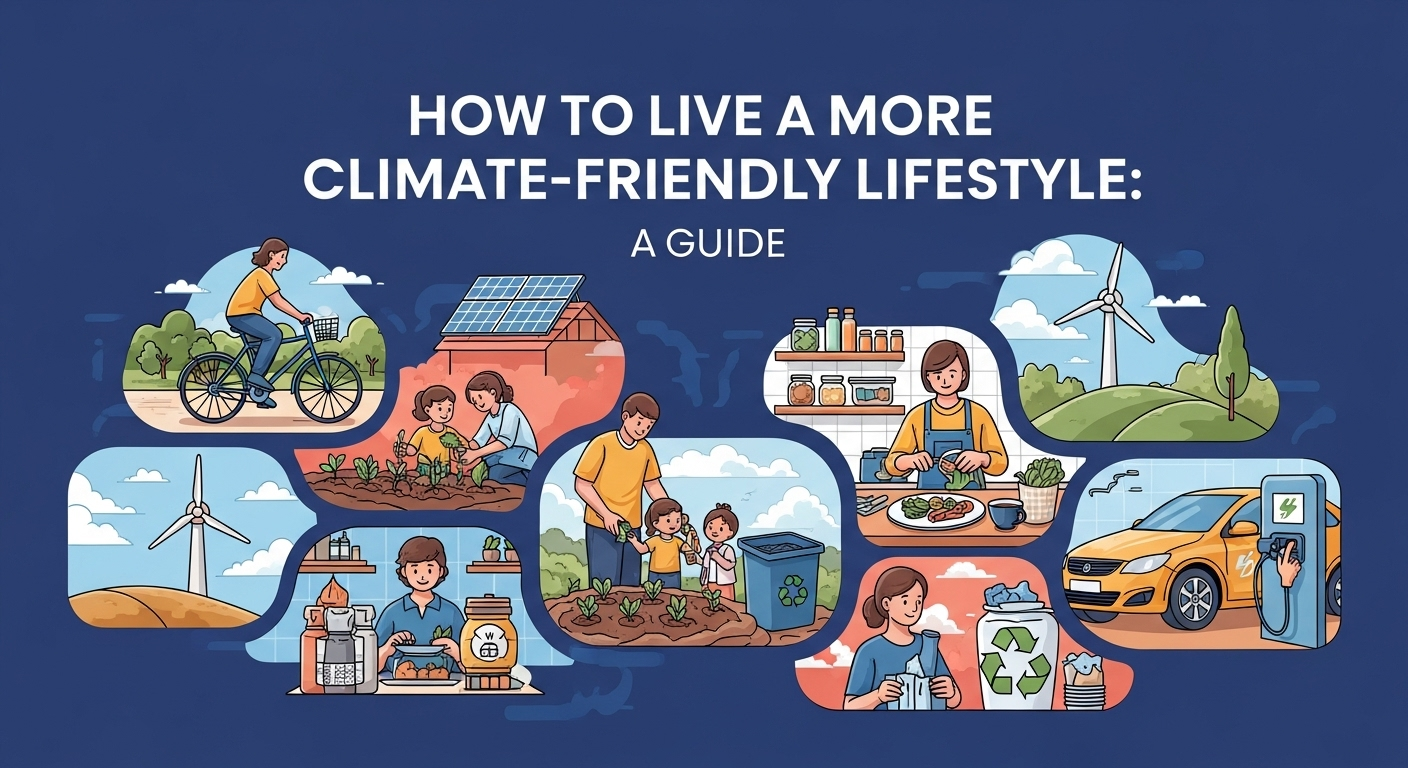The escalating climate crisis can often feel overwhelming, leaving many wondering what a single person can truly do. Yet, the collective power of individual action is a formidable force for change. The journey of transforming our planet for the better begins with the deliberate, conscious choices we make every day in our own homes and communities. This guide is designed to demystify and simplify the process, providing actionable, practical steps on how to live a more climate-friendly lifestyle. It’s not about achieving perfection overnight, but about embracing progress and making sustainable habits a core part of your daily routine. Understanding Your Starting Point: The Carbon Footprint Before embarking on a journey, it's essential to know your starting point. In the context of climate action, this means understanding your personal carbon footprint. A carbon footprint is the total amount of greenhouse gases (including carbon dioxide and methane) that are generated by our actions. It provides a tangible measure of our impact on the planet, turning an abstract concept into a concrete number we can work to reduce. Calculating your footprint is easier than you might think. Numerous online tools, such as those from the UN Carbon Footprint Calculator or the WWF Footprint Calculator, can give you a detailed estimate. These calculators typically ask questions about your home energy use, transportation habits, diet, and shopping patterns. The process itself is enlightening, often revealing surprising sources of emissions in your daily life and highlighting the most impactful areas for change. Once you have your number, don't be discouraged. Instead, view it as your baseline. The goal is not to compete with others but to compete with your past self. Use this information to set realistic, achievable goals. Perhaps you start by aiming to reduce your footprint by 10% in the next six months. By breaking down the larger goal into smaller, manageable steps across different areas of your life, you build momentum and create lasting change without feeling overwhelmed. Revolutionizing Your Plate: The Power of a Climate-Friendly Diet The food system, from farm to fork, is one of the largest contributors to global greenhouse gas emissions. The choices we make about what we eat have a direct and profound impact on land use, water consumption, and methane emissions. Fortunately, this also means your dinner plate is one of the most powerful tools you have for positive climate action. Shifting your dietary habits is a high-impact strategy that you can begin implementing with your very next meal. This transformation doesn’t require a radical, all-or-nothing approach. It's about being more mindful of the journey your food takes to reach you and the resources it consumes along the way. Prioritizing foods with a lower environmental impact, reducing waste, and supporting sustainable agricultural practices are the cornerstones of a climate-friendly diet. Each small adjustment, when multiplied across millions of people, creates a powerful ripple effect throughout the entire food industry. The beauty of a climate-friendly diet is that it often aligns with a healthier lifestyle. Diets rich in plants, low in processed items, and focused on whole foods are beneficial for both your body and the planet. This synergy makes the transition not just an environmental responsibility but also an investment in your personal well-being. Embrace Plant-Rich Eating One of the most significant changes you can make is to reduce your consumption of meat and dairy, particularly beef and lamb. The livestock industry is a major source of methane, a potent greenhouse gas, and requires vast amounts of land and water. A study published in the prestigious journal Science revealed that meat and dairy production uses 83% of the world's farmland and produces 60% of agriculture's greenhouse gas emissions, despite providing only 18% of calories and 37% of protein. Embracing a "plant-rich" or "flexitarian" diet is an excellent and accessible approach. This doesn't mean you must become a vegetarian or vegan overnight (though that is a powerful option). It simply means making plants—fruits, vegetables, legumes, nuts, and grains—the centerpiece of your meals. Try initiatives like "Meatless Mondays" to start. Experiment with delicious plant-based recipes and discover how flavorful and satisfying meals centered on beans, lentils, tofu, and mushrooms can be. Even swapping beef for chicken, which has a significantly lower carbon footprint, is a step in the right direction. Prioritize Local and Seasonal Foods The term "food miles" refers to the distance food is transported from where it is grown to where it is consumed. Foods that are flown in from across the globe have a massive carbon footprint due to aviation fuel. By choosing to eat locally and seasonally, you drastically reduce these transportation emissions. Local food is fresher, often tastes better, and supports your local economy and farmers who are more likely to use sustainable practices. Visit a local farmers' market to see what's in season in your area. This is a great way to connect with your food source and learn directly from the growers. Consider joining a Community Supported Agriculture (CSA) program, where you receive a regular box of seasonal produce from a local farm. This not only cuts down on food miles but also encourages you to cook with a wider variety of fresh ingredients, reducing your reliance on processed foods that often have complex and energy-intensive supply chains. Minimize Food Waste Globally, approximately one-third of all food produced for human consumption is lost or wasted. When food ends up in a landfill, it decomposes without oxygen and releases methane, a greenhouse gas over 25 times more potent than carbon dioxide. Reducing food waste is therefore a critical component of a climate-friendly lifestyle, and it also saves you money. Adopt smart habits to combat food waste at home. Plan your meals for the week before you go grocery shopping to ensure you only buy what you need. Store fruits and vegetables properly to extend their freshness—learn which items should be refrigerated and which should be kept on the counter. Get creative with leftovers, and understand the difference between "best-by" and "use-by"





